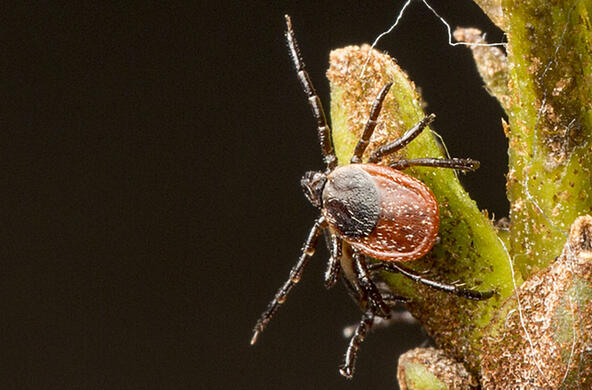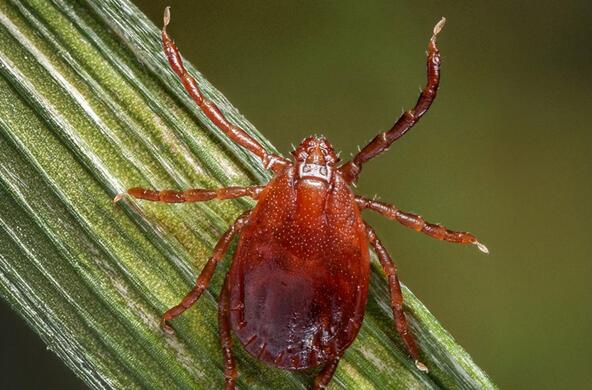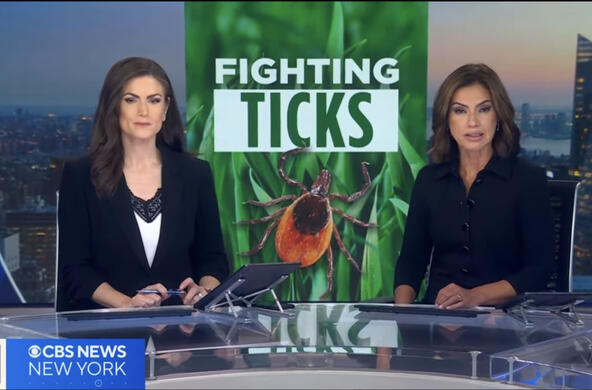Rick Ostfeld lives in deep in the heart of Lyme disease country. An ecologist at the Cary Institute of Ecosystem Studies in Millbrook, New York, Ostfeld has been studying the ticks that transmit Lyme to humans for decades. These days, he’s busier than ever.
Around the world, diseases spread by ticks are on the rise. Reported cases of Lyme, the most common US tick-borne illness, have quadrupled since the 1990s. Other life-threatening infections like anaplasmosis, babesiosis, and Rocky Mountain spotted fever are increasing in incidence even more quickly than Lyme. Meat allergies caused by tick bites have skyrocketed from a few dozen a decade ago to more than 5,000 in the US alone, according to experts. And new tick-borne pathogens are emerging at a troubling clip; since 2004, seven new viruses and bugs transmitted through tick bite have shown up in humans in the US.

Scientists don’t know exactly which combination of factors—shifting climate patterns, human sprawl, deforestation—is leading to more ticks in more places. But there’s no denying the recent population explosion, especially of the species that carries Lyme disease: the black-legged tick. “Whole new communities are being engulfed by this tick every year,” says Ostfeld. “And that means more people getting sick.”
Tick science, surveillance, and management efforts have so far not kept pace. But the country’s increasingly dire tick-borne disease burden has begun to galvanize a groundswell of research interest and funding.
In 1942, Congress established the CDC specifically to prevent malaria, a public health crisis spreading through mosquitoes. Which is why many US states and counties today still have active surveillance programs for skeeters. The Centers for Disease Control and Prevention uses data from these government entities to regularly update distribution maps, track emerging threats (like Zika), and coordinate control efforts. No such system exists for ticks.
Public health departments are required to report back to the CDC on Lyme and six other tick-borne infections. Those cases combined with county-level surveys and some published academic studies make up the bulk of what the agency knows about national tick distribution. But this data, patchy and stuck in time, doesn’t do a lot to help public health officials on the ground. “We’ve got national maps, but we don’t have detailed local information about where the worst areas for ticks are located,” says Ben Beard, chief of the CDC’s bacterial diseases branch in the division of vector-borne diseases. “The reason for that is there has never been public funding to support systematic tick surveillance efforts.”
That’s something Beard is trying to change. He says the CDC is currently in the process of organizing a nationwide surveillance program, which could launch within the year. It will pull data collected by state health departments and the CDC’s five regional centers about tick prevalence and the pathogens they’re carrying to build a better picture of where outbreaks and hot spots are developing, especially on the expanding edge of tick populations.
The CDC is also a few years into a massive nationwide study it’s conducting with the Mayo Clinic, which will eventually enroll 30,000 people who’ve been bitten by ticks. Each one will be tested for known tick diseases, and next-generation sequencing conducted at CDC will screen for any other pathogens that might be present. Together with patient data, it should provide a more detailed picture of exactly what’s out there.
Together, these efforts are helping to change the way people and government agencies think about ticks as a public health threat. “Responsibility for tick control has always fallen to individuals and homeowners,” says Beard. “It’s not been seen as an official civic duty, but we think it’s time whole communities got engaged. And getting better tick surveillance data will help us define risk for these communities in areas where people aren’t used to looking for tick-borne diseases.”
The trouble is that scientists also know very little about which interventions actually reduce those risks. “There’s no shortage of products to control ticks,” says Ostfeld. “But it’s never been demonstrated that they do a good enough job, deployed in the right places, to prevent any cases of tick-borne disease.” In a double-blind trial published in 2016, CDC researchers treated some yards with insecticides and others with a placebo. The treated yards knocked back tick numbers by 63 percent, but families living in the treated homes were still just as likely to be diagnosed with Lyme.
Ostfeld and his wife and research partner Felicia Keesing are in the middle of a four-year study to evaluate the efficacy of two tick-control methods in their home territory of Dutchess County, an area with one of the country’s highest rates of Lyme disease. It’s a private-public partnership between their academic institutions, the CDC, and the Steven and Alexandra Cohen Foundation, which provided a $5 million grant.
Ostfeld and Keesing are blanketing entire neighborhoods in either a natural fungus-based spray or tick boxes, or both. The tick boxes attract small mammal hosts, which get a splash of tick-killing chemicals when they venture inside. They check with all the human participants every two weeks for 10 months of the year to see if anyone’s gotten sick. By the end of 2020 the study should be able to tell them how well these methods, used together or separately on a neighborhood-wide scale, can reduce the risk of Lyme.
“If we get a definitive answer that these work the next task would be to figure out how to make such a program more broadly available. Who’s going to pay for it, who’s going to coordinate it?” says Ostfeld. “If it doesn’t work then perhaps the conclusion is maybe environmental control just can’t be done.”
In that case, people would be stuck with pretty much the same options they have today: protective clothing, repellants, and daily partner tick-checks. It’s better than nothing. But with more and more people getting sick, the US will need better solutions soon.








